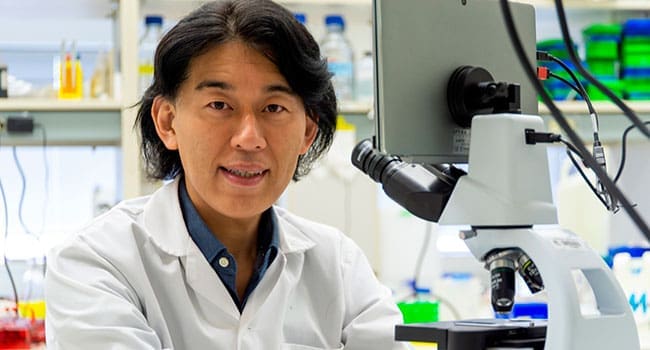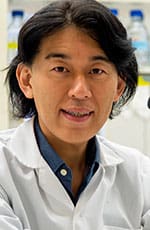A University of Alberta researcher’s past work has led to a new drug being approved for use in the United States to treat patients suffering from Duchenne muscular dystrophy (DMD).
The drug, viltolarsen, was approved for use in Japan earlier this year and passed a significant hurdle in August when the U.S. Food and Drug Administration approved its use in that country. It’s now under review in Canada.
Viltolarsen was developed by pharmaceutical company Nippon-Shinyaku in collaboration with the National Center of Neurology and Psychiatry Japan, based on the work of Toshifumi Yokota. Yokota is a professor of medical genetics in the Faculty of Medicine & Dentistry, and holder of the Friends of Garrett Cumming/Muscular Dystrophy Canada Research Chair and the Henri M. Toupin Chair in Neurological Science at the U of A.
“The drug is specifically designed to treat about 10 percent of patients with Duchenne muscular dystrophy who have a specific genetic mutation of the DMD gene,” said Yokota. “Our 2009 study was one of the first to show that DNA-like molecules can restore the function of protein production of the gene, and with viltolarsen, the DNA-like molecules are customized to a specific mutation that causes DMD in some patients.”
DMD is a genetic disease that causes a lack of a protein called dystrophin, which helps keep cells intact. This leads to muscular degeneration and weakness. According to the Muscular Dystrophy Association, DMD affects about six of every 100,000 people in North America.
Early research on genetic treatments for the various forms of muscular dystrophy involved using actual DNA to restore missing proteins. That approach was quite toxic to cells and animal models, usually leading to a significant immune response, Yokota said.
Current approaches to treating genetic diseases involve the use of synthetic DNA-like molecules, called antisense oligonucleotides, which are more stable and bind to DNA and RNA in a way that makes the immune system less likely to react to them.
Yokota hopes in the future to expand the number of patients the drug could help. He believes that up to 90 percent of patients with DMD could benefit.
He also said synthetic DNA has the potential to work for other forms of muscular dystrophy, though each form would require a unique DNA-like molecule to be designed for it.
“Precision medicine is basically mutation-based customized therapy,” said Yokota. “So we will have to develop a bunch of different DNA-like molecules to treat other patients and diseases.
“But I’m pleased to see that the regulatory process is changing to adapt to this new movement where we are treating only a small number of patients. I think this is a very interesting time.”
| By Ryan O’Byrne
This article was submitted by the University of Alberta’s online publication Folio, a Troy Media content provider partner.
The views, opinions and positions expressed by columnists and contributors are the author’s alone. They do not inherently or expressly reflect the views, opinions and/or positions of our publication.



